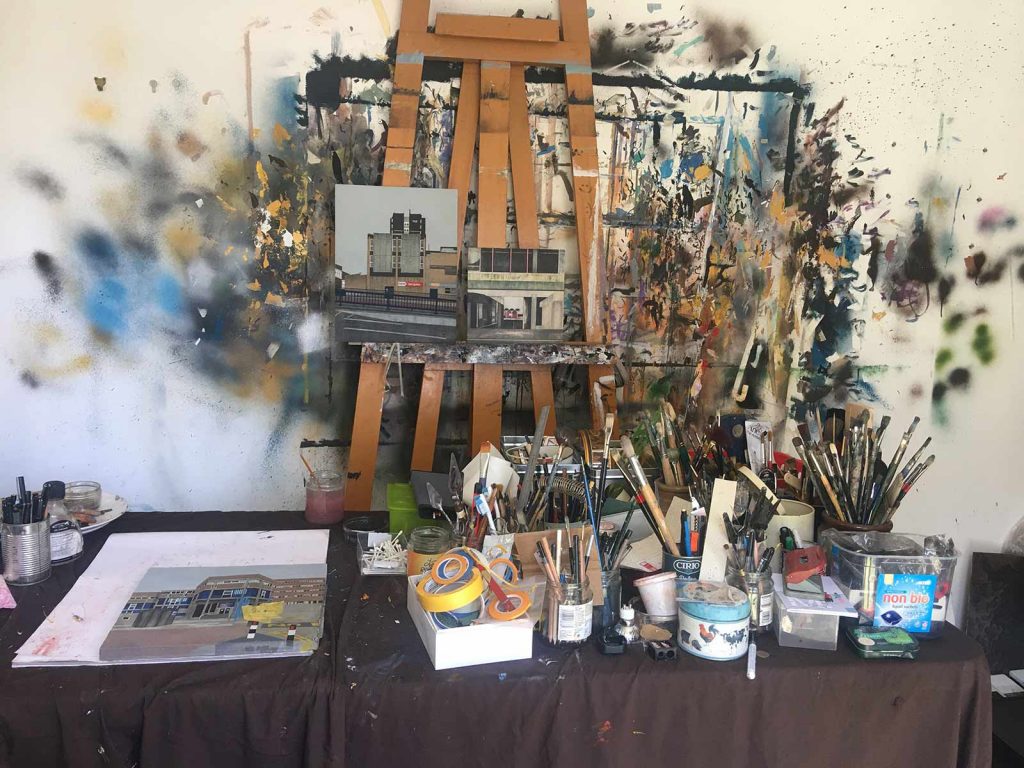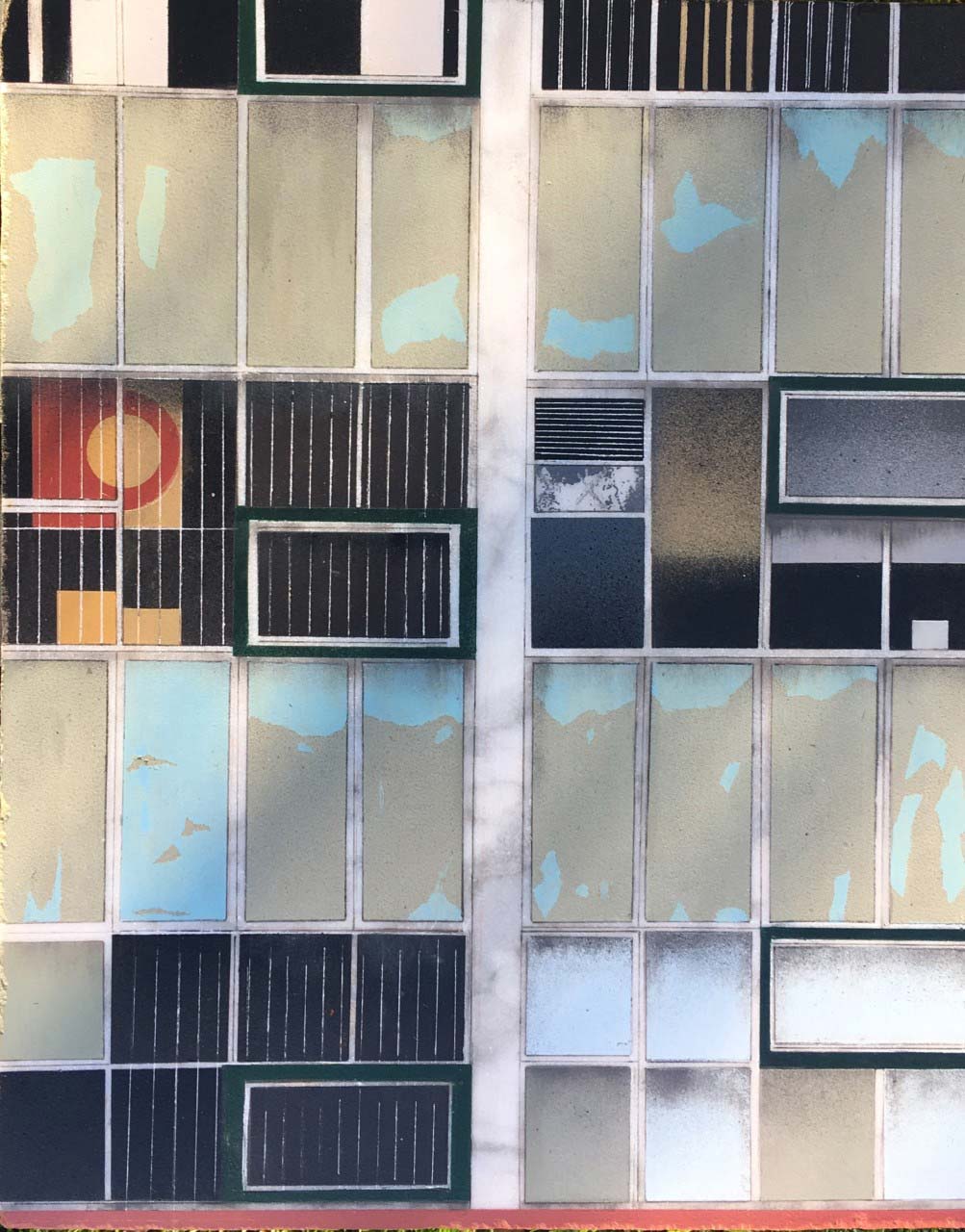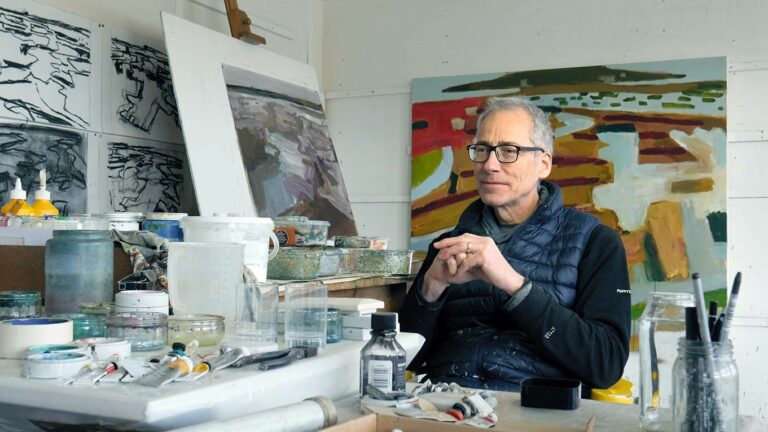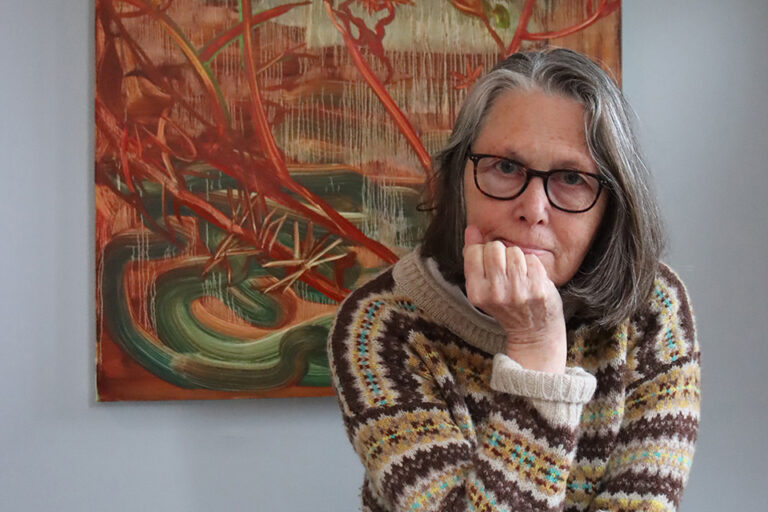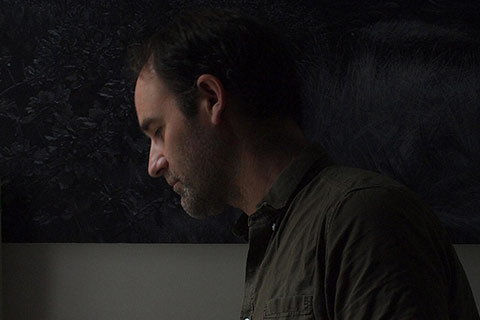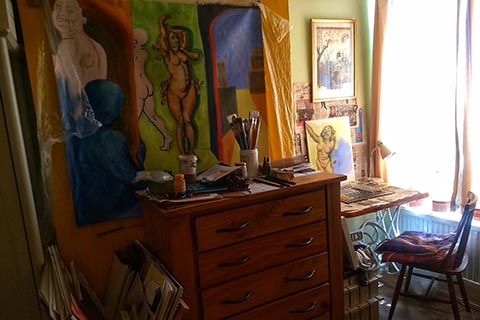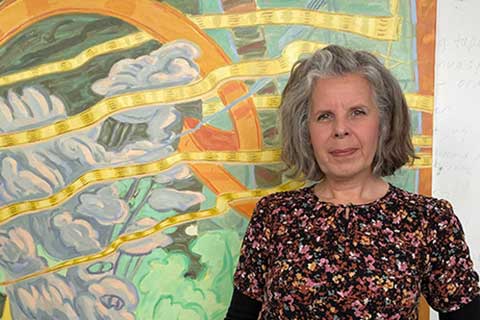Mandy Payne: Artist of the Month
Artist of the Month May 2020: Mandy Payne, selected and interviewed by Paul Newman.
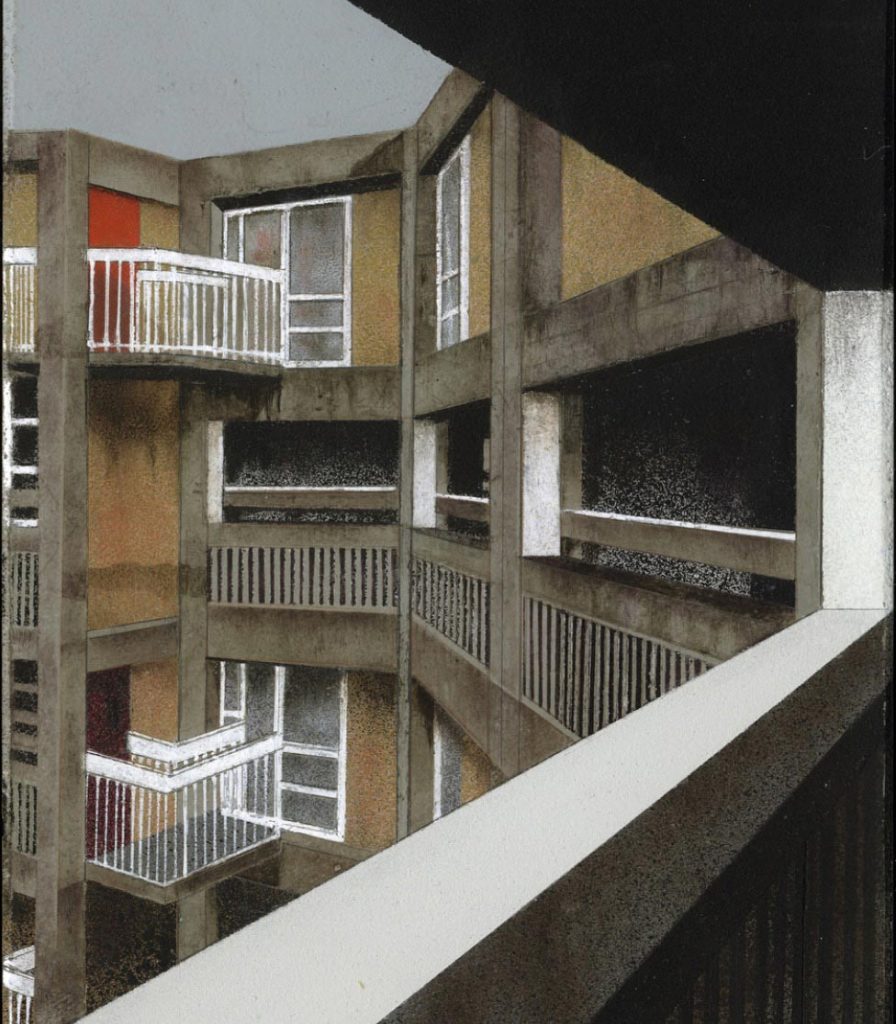
CBP: There’s a clear correlation between the subject, imagery and materials you choose to make your paintings. There’s a natural physicality to them as objects. Both times I’ve encountered your small works they had a particularity that was also evocative of a tablet, a museum artefact, or something almost of an early Renaissance Art quality to them. I might be miss-remembering my encounter of them, but I wondered if there is a notion of them as a document, or archival object in an expanded sense?
Mandy Payne: Yes, I think there is very much a notion of my paintings being documents or an archival objects. Many of the sites I explore are under threat of demolition or undergoing irrevocable change by gentrification. I hope these works might serve as a record of how things were before they were lost. I also prefer if I can, not to frame my paintings which makes them more ‘object like’ and also emphasises their structural /surface qualities. The haptic quality of paint, materiality and facture are really important to me, which is why I try to use materials that have a direct connection to the sites I depict.
Emma Bolland* recently wrote a review about my work and described it as being ‘almost meta in its flatness, functions not just as surface, but as structure, object, and conceptual architectural blueprint’, which I think describes what I’m trying to achieve far better than I ever could.
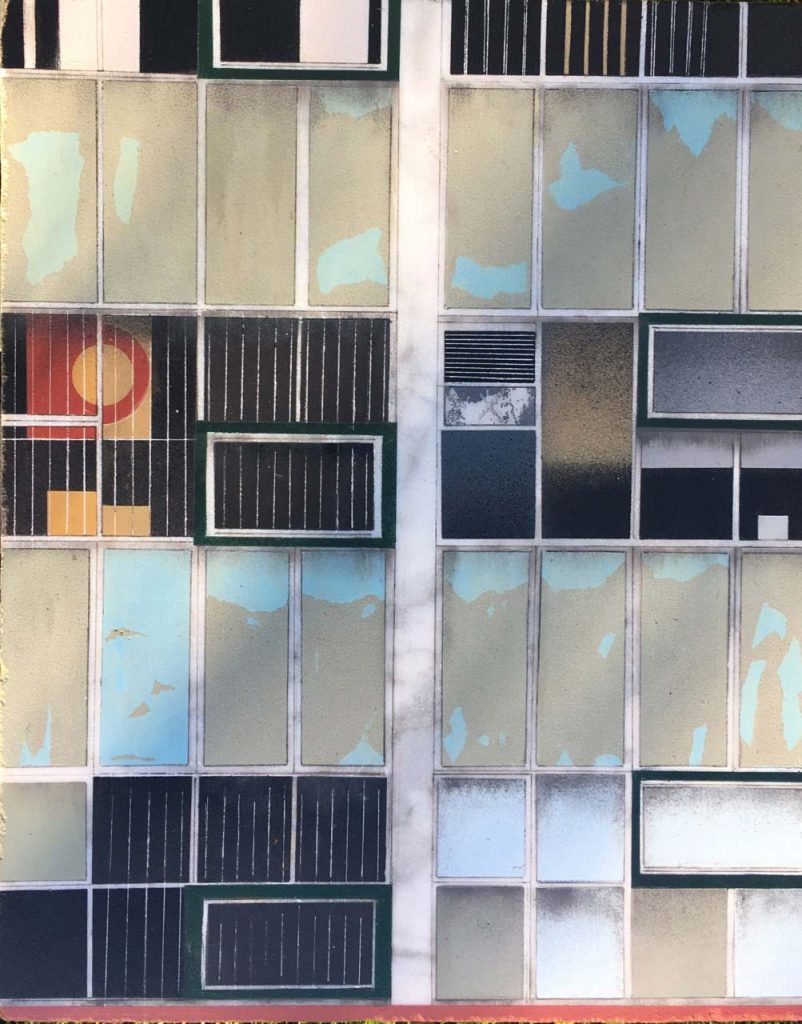
CBP: Following on from the previous question, the scale of the works is generally small, occasionally miniature. You do have some slightly larger works on you web site. It allows the viewer examine and scrutinize the works, their exquisiteness, then consider the scale and physicality of the source buildings. They almost have a doll’s house effect of miniaturizing the viewer and drawing them into the works. There might also be a relationship the document – the photograph as a source as much as the architectural referent. What are the strategies for scale? Is it dependent on conceptual and / or practical considerations?
MP: I usually work on hand cast slabs of concrete (between about 20cm – 30cm square) being largely limited to this size for practical reasons due to the weight of them. Recently, I have been working on marble (referencing the perceived inequalities of rival building materials) which is even heavier than concrete…The larger works on my website (up to 90cm) are made of glass fibre reinforced concrete which is considerably lighter. I have had these panels custom made by a local company and have found working on a larger scale an interesting process. However, I feel the larger works lack the intimacy and capacity to draw you in that the smaller ones do. The surface quality of the professionally made panels is also really pristine, my own hand made pieces often have unintentional porous defects which I actually quite like and are probably more in keeping with the unloved sites that I’m drawn to.
It is interesting that you describe the works as having a ‘doll’s house effect’, as their small scale is in complete opposition to the monumental, imposing structures depicted. A lot of the locations I choose are of people’s homes (or were) and I think the small scale enhances a feeling of domesticity and of spaces lived in.
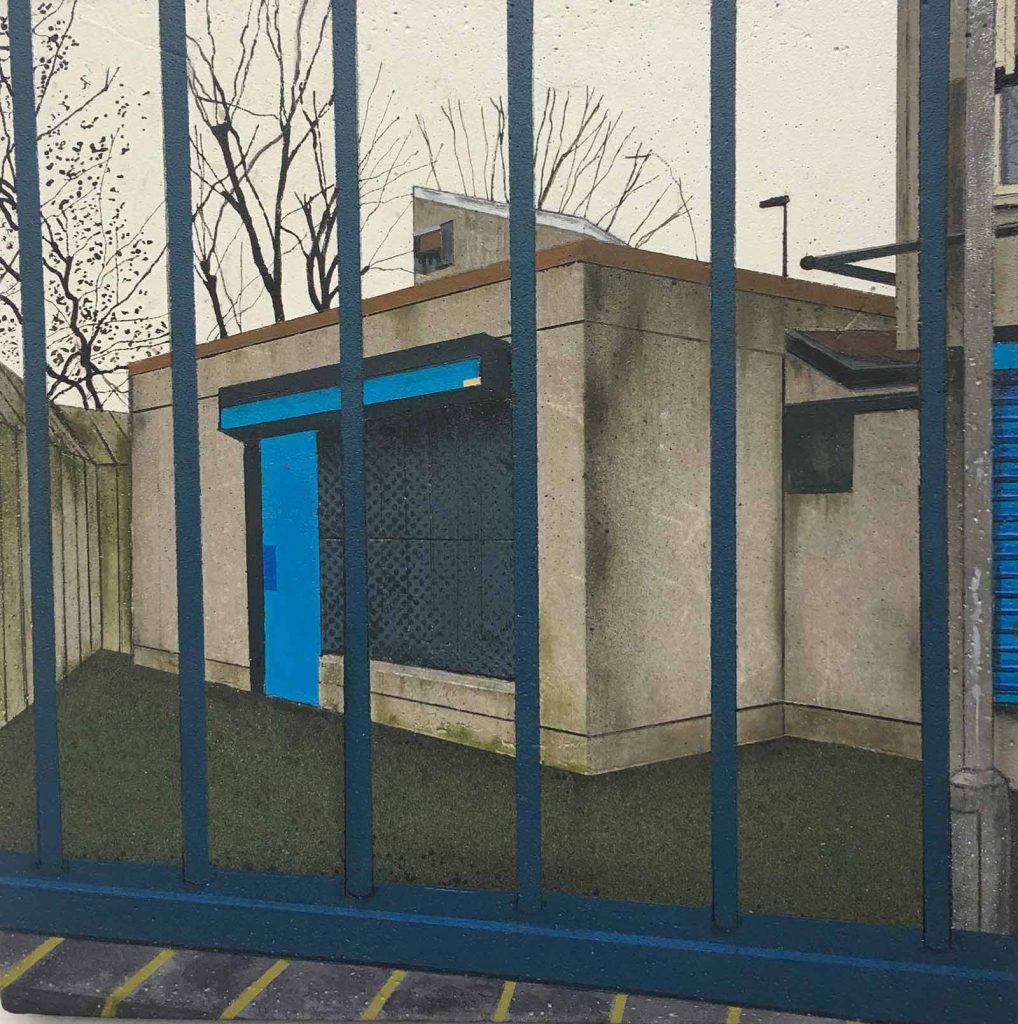
CBP: Can you discuss your connection to the subject, for example; are they places you grew up in, or did you develop an aesthetic or political connection to them as an artist? Are you a distanced observer? Do you do a lot of urban walking to find your subjects? Are many of these locations scheduled for demolition, urban re development, or still occupied areas in urban communities?
MP: I have long been drawn to mid 20th century architecture and at 18 very nearly studied architecture at university. My school was a concrete comprehensive on the outskirts of Bradford, designed by Chamberlin, Powell and Bon (the architects of the Barbican) and I think my passion for similar buildings probably started there.
Art is a second career for me, before this I worked as a Community dentist in Rotherham for 23 years working with vulnerable adults and children, in areas of high social need. A lot of my work involved domiciliary visits to estates and homes similar to the sites I depict in my paintings. I think this job really shaped how I view the world and also reinforced to me the huge inequalities that are present in the UK today. These experiences have definitely politicized my work and although this might not be that overt, I tend to choose titles quite carefully to contextualize and to give a nudge to the underlying political narrative.
The locations I choose are varied but often are places that I have a loose connection with. For 6 years I focused on Park Hill an iconic housing estate in my home town of Sheffield, currently undergoing gentrification. When public access was no longer possible I started exploring new sites in London, Manchester, Huddersfield and the North East. In locating sites to inspire I do do a lot of urban walking (which I really enjoy) and I frequently return to sites that particularly resonate with me over and over again.
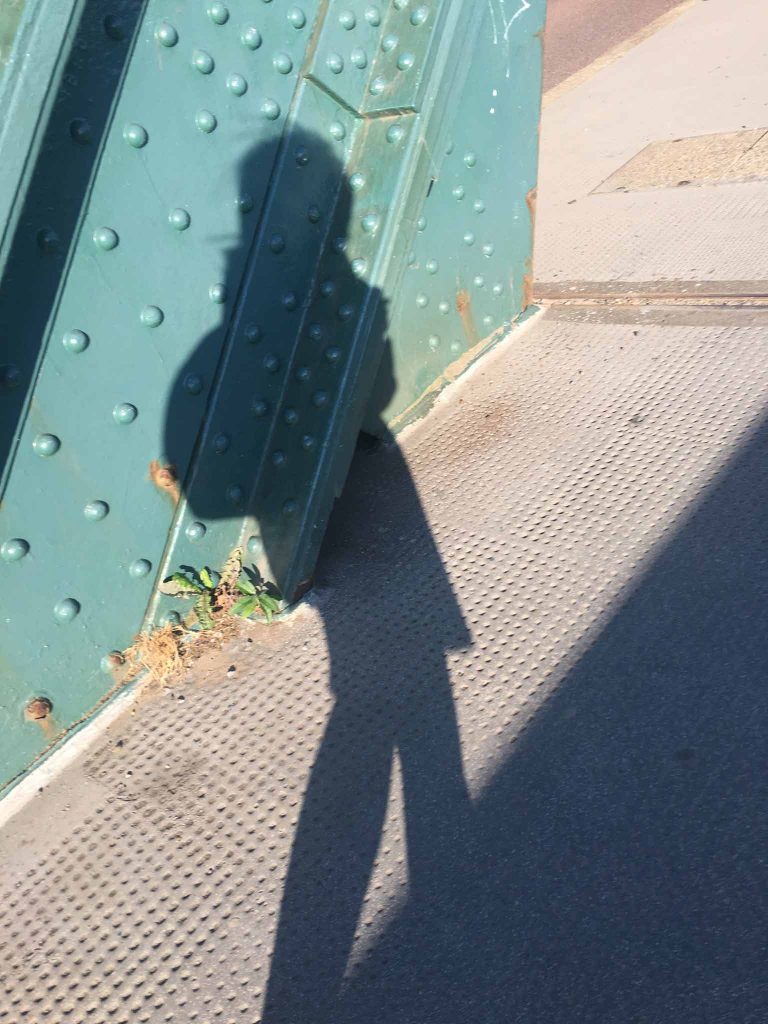
CBP: How close do you stick to a real location or photographic referent? Do you make changes for the paintings?
MP: I tend to stick quite closely to my photographic source as it’s important to me to record what is actually there. The photos I use are usually just quick snaps taken on my phone as I’m mindful that I’m often photographing people’s homes and I find my phone camera less intrusive. I do sometimes also make sketches in situ.
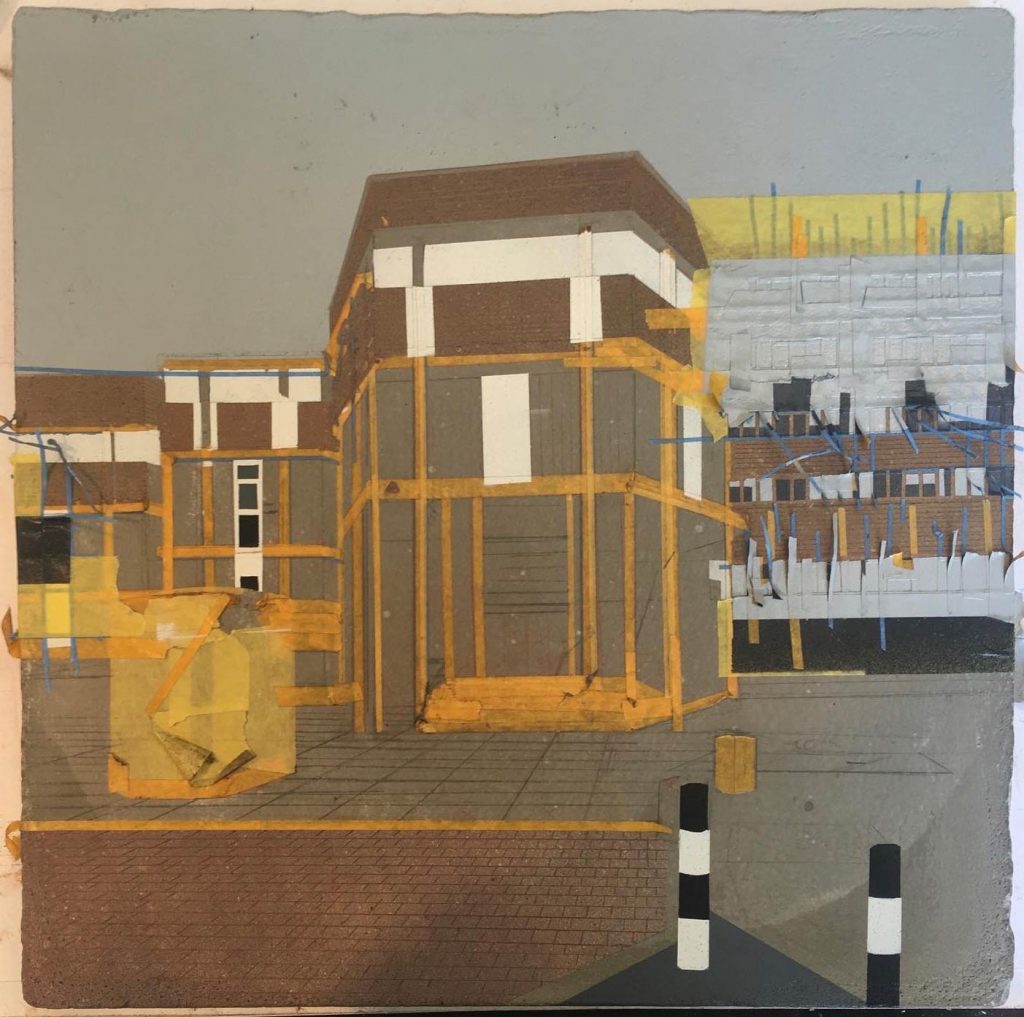
CBP: Can you briefly discuss aspects of your painting routine, whether for example you have a number of works on the go with the detailed prep and production time required for the construction of the work.
MP: I tend to have quite a few pieces on the go at one time. Formal modernist qualities of colour, composition and perspective are important to me and although the work is highly representational I am also drawn to abstraction and I am always looking to include such elements within the work, finding spaces within spaces, complementary horizontals, diagonals and verticals.
I always take a lot of care in getting the preliminary drawing right, working initially on thin newsprint paper usually using a grid, then transferring this drawing on to my concrete panel using red oxide powder. I then build up the image in layers using micro masking tapes and newspaper to isolate areas to spray paint and then fine finishing small details with oil paint.
* https://corridor8.co.uk/article/beyond-surface-painting-for-dark-times/
